Chinese automakers are rapidly expanding exports to key regions like Europe and Latin America after long focusing on their home market. But that’s created problems as target markets fight back with new tariffs and other trade restrictions. As a result, some Chinese manufacturers are looking to shift production abroad – and that could include factories in the U.S.
Chinese auto exports have grown almost fivefold worldwide since 2019, the country overtaking Japan as the world’s largest auto exporter in 2023. To meet demand, the SAIC brand in July launched the world’s largest “ro-ro,” or roll-on/roll-off car carrier.
The term, “going overseas,” has become the active buzzword for Chinese manufacturers who, until recently, focused on their rapidly expanding domestic market. But this push has been met with increasing resistance. Earlier this year, U.S. President Joe Biden quadrupled tariffs on Chinese auto imports, to 100%. The European Union recently raised its tariffs on Chinese auto imports to 45%.
Determined to overcome such obstacles, Chinese manufacturers are now working up plans to shift some production abroad, following the strategies of Japanese and Korean rivals like Toyota, Honda and Hyundai.
Don’t look but…
The arrival of Chinese-made vehicles could pose “an extinction-level event,” Scott Paul, the president of the trade group, the Alliance for American Manufacturing, declared earlier this year. That sentiment has been echoed repeatedly by industry leaders, as well as a growing number of politicians. And it led the Biden administration to quadruple tariffs on imported Chinese vehicles this year.
But analysts like Sam Fiorani, of AutoForecast Solutions, don’t expect the Chinese to simply accept being locked out of the world’s largest automotive market. If anything, he expects them to take a creative approach that includes producing vehicles in places like Canada or Mexico, where they could sidestep tariffs. And, if it makes business sense, Fiorani expects brands like BYD and SAIC to consider building products in the U.S.
Indeed, said Fiorani, Chinese cars now being made here. “I don’t think people see Polestar and Volvo as being Chinese brands but they’re made already in South Carolina.”
Along with some gas models it’s been assembling in a plant near Charleston, South Carolina for several years, Volvo recently launched production of the all-electric EX90 at the factory. And it’s spin-off Polestar brand now builds the Polestar 3 model there.
More North American production in the works
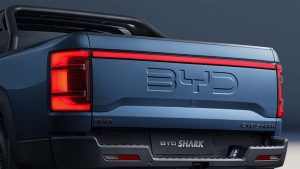
Chinese automakers now control as much as 20% of the Mexican market and BYD is looking for a plant site in the country.
Last February, BYD Americas CEO Stella Li told Reuters it has begun looking for possible sites to build an assembly plant in Mexico. It’s expected to focus on regions of the country where there is already an automotive manufacturing presence – which would make it easier to not only source parts and components but find skilled labor and take advantage of an established distribution infrastructure.
Meanwhile, said Fiorani, “There’s talk about a Chinese brand looking at opening a plant in Canada. They’re reportedly considering a brownfield plant,” he added, with a Headlight.News source suggesting one of two plants Stellantis has closed in Ontario could be in the sites of a Chinese manufacturer.
Building vehicles in either neighbor could skirt tariffs due to the United States-Mexico-Canada Agreement, the successor to NAFTA, though there’s been talk in Washington of ways to still block such a move. As a result, some Chinese brands are now reported to be considering U.S. production sites, with BYD and SAIC considered among the most likely to make such a move.
More Chinese Auto News
- Chinese Auto Imports Pose “Extinction Level” Event
- Biden Admin. Quadruples Tariffs on Chinese-Made EVs
- BYD, Stellantis Dismiss Rumors of Deal
China Targets Europe
While a number of traditional brands were absent from this year’s Paris Motor Show, Chinese automakers were there in force. They’re been growing share at a rapid rate, especially in the emerging EV segment, and are determined to keep the momentum building, despite new import tariffs of up to 45% which go into effect at the end of this month.
BYD’s Li sharply criticized the new duties but indicated the company isn’t backing down, with still more products coming – and plans to drop prices in order to win over more consumers. But Li also told reporters that the automaker ultimately plans to use local production for all of the vehicles it will sell in Europe.
And it’s not alone. At least nine Chinese automakers have indicated they are looking at ways to build vehicles in Europe. Chery Auto, the largest Chinese automaker by volume, already has signed a deal with Spain’s EV Motors. It expects to start producing some of its battery-electric vehicles at a plant near Barcelona by year-end. Leapmotor, which has a partnership with Stellantis, plans to start producing its electric T03 city car in Europe shortly, with other products under consideration. And SAIC is looking for a European factory site, likely for its MG brand.
Other Chinese manufacturers considering European production include: Xpen, Geely, GAC, Great Wall and Dongfeng, the latter said to be in “late talks” to set up a factory in Italy.


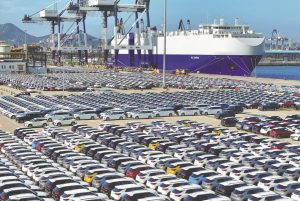
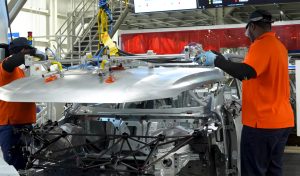
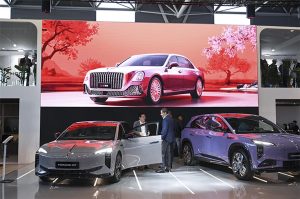



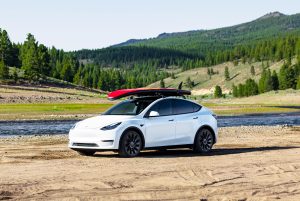

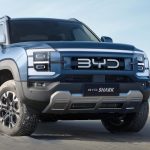
0 Comments